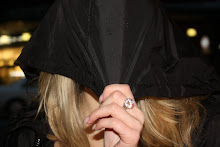



About a month ago, when I visited Okinawa, I went to a Buddhist temple and the fence around it and the top of the roof had symbols of swastika on them. I was very surprised, but I assumed that it doesn’t mean the same thing in Japan as it did during the World War 2 in Germany. I was right; it doesn’t have the same stain in Japan as it does in the Western countries.
In Japan, swastika symbol is known as manji. It has different meanings depending on the direction it faces. It represents universal harmony and the balance of opposites. When facing left, it represents love and mercy. When facing right, it means strength and intelligence. Because the right-facing swastika is associated with Nazism, Buddhist manji after the mid-20th century are almost universally left-facing . You can see on the photos that swastikas on the fence of a temple are left-facing.
In Japan, manji is also used as a map symbol for Buddhist temples.
http://www.lotussculpture.com/swastika1.html →Swastika and Religion

1 comment:
Have you talked with any of your Japanese friends to see if this symbol is problematic in Japan? Many cultures used this symbol or one similar to it; it is unfortunate that it has become so strongly associated with such a negative meaning.
Post a Comment